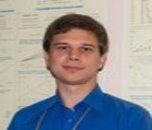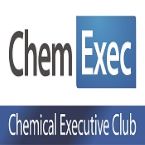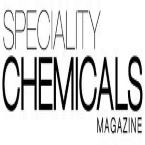session and tracks
TRACK 01: Medicinal Chemistry
Medical chemistry focuses on the molecular aspects of drug action, including interactions with drug targets from the aspects of both the drug and the target, the relationship between the chemical structure of the drug and its action, and the impact of metabolism on the structure of the drug and, consequently, the drug's action. Paul Ehrlich is the father of medicinal chemistry. A medicinal or pharmaceutical chemist studies and develops chemical substances that can be used as medicines. These chemists are essential to the pharmaceutical sector because they use chemical research techniques to isolate natural healing substances or create artificial ones.
Practitioners of medicinal chemistry have a solid background in organic chemistry, which must eventually be combined with a thorough understanding of biological principles relevant to cellular drug targets. Medicinal chemistry is by its very nature a multidisciplinary field.
Examples of medicinal chemistry-based research include the discovery of new medications to be tested in clinical trials within the pharmaceutical business as well as the identification of various plant features utilised to develop effective drugs.
TRACK 02: Organic Chemistry
The study of organic substances, which contain covalent connections between carbon atoms, and their structures, characteristics, and reactions, is known as organic chemistry. Their structural formula is determined by study of structure. The majority of the existing carbon compounds were thought to have originated in living organisms in the 19th century, giving rise to the speciality of chemistry known as organic chemistry. Numerous valuable goods, such as agricultural chemicals, pharmaceuticals, food additives, plastics, paint, enzymes, cosmetics, and various synthetic materials are created through the process of organic chemistry.
The study of life and the chemical processes connected to it is what organic chemistry is all about, making it crucial. Medical professionals, veterinary professionals, dental professionals, pharmacologists, chemical engineers, and chemists are just a few professions that use an understanding of organic chemistry.
All living organisms have four primary categories, or types, of organic compounds:
-
Carbohydrates
-
Lipids
-
Proteins and
-
Nucleic acids.
Petrol, plastics, detergents, colours, food additives, natural gas, and medications are a few examples.
TRACK 03: Inorganic Chemistry
An inorganic compound in chemistry is often a substance devoid of carbon-hydrogen bonds, meaning it is not an organic substance. Authorities have varying opinions on the matter; hence the distinction is not precisely defined. Inorganic chemistry is the study of the remaining subset of chemicals (i.e., those not containing carbon), while organic chemistry is defined as the study of compounds containing carbon. In the past, the term "inorganic" referred to the chemistry of "non-living" substances, specifically molecules and ions that did not include carbon.
Inorganic chemistry has four main types of chemical reactions:
-
Combination,
-
Decomposition,
-
Single displacement, and
-
Double displacement.
Some straightforward carbon-containing compounds are frequently regarded as inorganic. Examples include the following salts of inorganic cations: carbonates, carbon dioxide, carbides, and carbon monoxide.
TRACK 04: Chemical Bonding and Molecular Structure
Chemical Bonding: In order for chemical compounds to develop, atoms, ions, or molecules must be attracted to one another over time. Ionic bonds and covalent bonds both involve the sharing of electrons, which creates an electrostatic force between ions that have opposing charges. Based on the electrostatic attraction between the protons in atomic nuclei and the electrons in orbitals, a strong chemical bond is created when electrons are transferred between atomic centres or shared between them. Due to variations in the electronegativity of the constituent elements, there are several kinds of strong bonds. Life depends on four different kinds of chemical bonds:
-
Ionic,
-
Covalent,
-
Hydrogen, and
-
Van der Waals interactions.
Typical chemical substances that are water, sodium chloride and carbon dioxide
Molecular Structure: It is the three-dimensional shape of proteins and nucleic acids that endows them with their biological activities. Structural molecular biology uses x-ray diffraction, nuclear magnetic resonance, and other techniques to determine the three-dimensional arrangement of the atoms in biological molecules. In a molecular structure the bond lengths and bond angles are those for which the molecular energy is the least. Molecular structure holds a key to understanding Nature's intricate design mechanisms and blueprints. If we can understand her blueprints and basic materials, perhaps we can begin to mimic her beautiful products more cost effectively and with less detrimental environmental consequences
TRACK 05: Photocatalysis in 3D Printing
In CaSO4, 3D porous structures are created using 3D printing technology and can then be activated with the right photo catalyst. TiO2 was chosen as the optimal photo catalyst for creating activated 3D structures so that their efficacy in degrading contaminants in wastewater could be studied. Photo catalysts can be employed for a variety of purposes, including antifouling, antifogging, energy storage and conservation, deodorization, sterilisation, self-cleaning, air purification, wastewater treatment, and more. Semiconductors' electrical structure causes them to behave as photo redox process sensitizers.
There are several substances with photocatalytic potential, but titanium dioxide is thought to be the most efficient. Titanium dioxide itself is safe and utilised in a variety of items, including food and cosmetics. The photocatalyst film's degradation process is environmentally friendly.
TRACK 06: Nanophotonics use in Aeronautics
A branch of nanotechnology called Nano photonics or Nano-optics studies how light behaves at Nano scale scales as well as how nanometre-sized things interact with light. Numerous physical sensors, multifunctional materials with embedded sensors, large surface area materials, novel filters and membranes for air purification, improved electronics and displays with low power consumption, and high strength, low weight composites are just a few of the aerospace applications for nanotechnology.
TRACK 07: Biochemistry
The study of biological processes at the cellular and molecular level is known as biochemistry. Around the turn of the 20th century, scientists joined chemistry, physiology, and biology to study the chemistry of living systems, and it became a distinct field of study. Archibald Edward Garrod father of biochemistry. The three subfields of biochemistry are structural biology, enzymology, and metabolism. Cell biology, physiology, immunology, microbiology, pharmacology, toxicology, as well as the sciences of inflammation, cell injury, and cancer, all benefit greatly from biochemistry. These intimate connections highlight how vital biochemical processes and reactions are to life as we know it. For instance, a biochemist may research the properties of the keratin in hair in order to create shampoo that improves softness or curliness.
TRACK 08: Analytical Chemistry
The study of collecting, analysing, and disseminating data regarding the make-up and structure of matter is known as analytical chemistry. Identifying what matter is and how much of it there is, in other words, is both an art and a science. Analytical chemistry can be used to many different scientific disciplines, and there are four main areas where this is important. These fields include
-
Spectroscopy
-
Potentiometer
-
Acid-base techniques and
-
Chromatography
Spectroscopy: The molecular and/or structural makeup of a sample can be detected, ascertained, or quantified using spectroscopy in physical and analytical chemistry. Electromagnetic radiation will be reflected, absorbed, or emitted differently by different types of molecules and atoms.
Potentiometer: In analytical chemistry, potentiometry is a method that is typically used to determine the concentration of a solute in solution. In this method, a high-impedance voltmeter is used to measure the voltage between two electrodes (Wang, 2000). A high-impedance voltmeter is used to guarantee that the current flow is minimal.
Acid-base techniques: Titration techniques include complexometric and acid-base titration. Acid-base titration determines the concentration of an unknown acid or base in solution by calculating the precise quantity of the opposite base or acid needed to neutralise it. The neutralisation reaction serves as its foundation.
Chromatography: An analytical method known as "chromatography" is frequently used to separate a chemical mixture into its individual components so that each component can be properly examined.
Analytical chemistry includes techniques like measuring charged particles with mass spectrometry to ascertain a substance's makeup. Chemical analysis is crucial to a lot of aspects of our daily lives. The quality of the food we consume, the drugs we take, the water we drink, and the airhttps://chemistry.global-summit.com/ we breathe is ensured by accurate quality-control analyses.
TRACK 09: ElectroChemistry
The field of physical chemistry known as electrochemistry studies how a recognisable chemical change and an electrical potential difference interact as a measurable and quantitative phenomenon, with the potential difference either resulting from or being a cause of the chemical change. There are numerous frequent uses for electrochemistry in daily life. Chemical processes are the primary source of electricity for all types of batteries, including those that run flashlights, calculators, and automobiles. The plating of objects with decorative metals like gold or chromium uses electricity. Example: Electrochemistry includes the study of electrochemical cells. Cells that transform chemical energy into electrical energy are involved. Galvanic, also known as Voltaic and electrolytic cells are the two varieties of electrochemical cells. While electrolytic cells utilise non-spontaneous reactions and therefore need an external electron source, such as a DC battery or an AC power source, galvanic cells get their energy from spontaneous redox reactions.
TRACK 10: Natrual Product Synthesis
The goal of natural product synthesis is to synthesise a complex target molecule that is analytically similar to the substance that occurs naturally and is known as a natural product. The total synthesis of natural products has been the standard-bearer of chemical synthesis for the past century, and it has been the primary impetus behind the discovery of new chemical reactivity, the assessment of physical organic theories, the testing of the effectiveness of current synthetic methods, and the advancement of biology and medicine. Anything created by life falls under the broadest definition of a natural product, which also includes biotic materials like wood and silk, bio-based materials like corn-starch and bio plastics, bodily fluids like milk and plant exudates, and other natural substances that were once found in living things (e.g. soil, coal). The cells, tissues, and secretions of microorganisms, plants, and animals can be used to make natural goods. Any one of these sources will yield a crude (unfractionated) extract with a variety of structurally unique and frequently new chemical components.
TRACK 11: AgroChemistry
Agrochemicals, often known as agrochemicals or agrichemicals, are chemicals used in agriculture. Agrichemical typically refers to pesticides, such as fungicides, insecticides, herbicides, and nematicides. Agrochemicals are insecticides, herbicides, or fertilisers used in agricultural sectors to maintain ecosystems. Since ancient times, crude forms of agrochemicals have been employed to increase crop yields and reduce the numbers of agricultural pests. By defending crops from insects, rodents, fungi, weeds, and other pests, agrochemicals help to increase agricultural production. Because of their advantages, they have been employed carelessly, raising questions about their application. Insecticides, herbicides, rodenticides, and fungicides are the four primary categories of agrochemicals.
TRACK 12: Computational Chemist
A subfield of chemistry called computational chemistry makes use of computer modelling to help solve chemical issues. For the purpose of calculating the structures and properties of molecules, groups of molecules, and solids, theoretical chemistry techniques are incorporated into computer systems. Applying new hardware and software capabilities for data collecting and analysis is one of the typical tasks performed by computational chemists. constructing digital simulations and models of things and processes in the chemical and biological sciences. carrying out and deciphering statistical analysis on massive datasets. The development of photosensitizers for cancer phototherapy and the prediction of photochemical reactivity can both be done using computational chemistry. For instance, calculating the molecules' HOMO energy can be used to predict a photosensitizer's activity for DNA damage. Computational chemistry has two primary subfields, one based on classical mechanics and the other on quantum mechanics.
TRACK 13: CosmoChemistry
Cosmochemistry, often known as chemical cosmology, is the study of the chemical make-up of matter in the cosmos and the processes that produced such make-ups. The analysis of the chemical makeup of meteorites and other physical samples is the main method used to do this. One of the founding figures of Cosmo chemistry, Harold Urey, conducted studies that finally helped us understand how elements came to be and how abundant certain elements are in stars. Despite the fact that cosmochemistry is one of the most interdisciplinary of disciplines, the most interesting breakthroughs in the subject and the most rigorous theoretical restrictions have come from the identification of the isotopic characteristics of extraterrestrial materials and their constituents.
TRACK 14: Environmental Chemistry
Environmental chemistry is the study of how chemicals affect the environment and human health as well as how they affect the air, water, and soil. Because the research they undertake helps to influence decisions that have an impact on all of us, environmental chemists are frequently the scientists who interact with the public the most. Environmental scientists evaluate the potential long-term harm that pollutants in soil and groundwater could cause to both the environment and human health. In order to implement corrective measures, label contaminated soils as hazardous waste, manage their disposal, and oversee on-site remediation, they must apply for environmental licences.
Water Treatment Specialist in Water Treatment and Waste Disposal are among the common employment locations.
-
A specialist in environmental assessment.
-
Ecological auditor.
-
Chemist.
-
Environmental specialist.
-
Research Associate in Universities for Government Scientists (Provincial and Federal).
Environmental chemistry is concerned with the chemical processes that affect the chemical speciation and composition of natural systems (air, water, and soils), the chemical fate and mobility of contaminants in the environment, the chemical processes that determine the toxicity and bioavailability of contaminants, and chemical
TRACK 15: Physical and Theoretical Chemistry
Physical Chemistry: Physical chemistry is the study of macroscopic and microscopic events in chemical systems as they relate to the laws, methods, and ideas of physics, including motion, energy, force, time, thermodynamics, quantum chemistry, statistical mechanics, analytical dynamics and chemical equilibria. Founder of physical chemistry and 1909 Nobel laureate Wilhelm Ostwald
The following are some of the main divisions of physical chemistry:
-
Thermodynamics
-
Kinetics in Chemistry
-
Dimensional Chemistry
-
Spectroscopy
-
Surface Chemistry
-
Electrochemistry
-
Chemistry equilibrium
Understanding the physical characteristics of atoms and molecules, how chemical processes take place, and what these characteristics indicate are the main goals of physical chemists. Their findings are based on an understanding of chemical characteristics and a description of how they behave utilising physics theories and mathematical calculations.
Theoretical Chemistry: The area of chemistry known as theoretical chemistry creates theoretical generalisations that are used in modern chemistry, such as the ideas of chemical bonding, chemical reactions, valence, the surface of potential energy, molecular orbitals, orbital interactions, and molecules. The goal of theoretical chemistry is to offer hypotheses and justifications for chemical observations, as well as to pose queries that need to be addressed by subsequent experiments. Examples include drug design, combinatorial chemistry, protein-protein docking, and molecular docking. The motivating force behind this graphical technique is the fitting of shape and electric potential. applying classical mechanics to model the movement of an assemblage of atoms and molecules' nuclei.
TRACK 16: Nuclear Chemistry
The branch of chemistry known as nuclear chemistry studies radioactivity, nuclear reactions, and changes to atoms' nuclei, such as nuclear transmutation and nuclear characteristics. Nuclear chemists work in a variety of fields of research, such as nuclear engineering and nuclear imaging in medicine (in power generation). They frequently seek to enhance the effectiveness and security of nuclear power sources as well as the procedures for storing and discarding radioactive waste. This module explores the history of nuclear chemistry from the work of Marie Curie and others. Alpha, beta, and gamma radiation are described in detail. The difference between nuclear fission and nuclear fusion is then explained and the half-life concept is applied to radioactive decay.
TRACK 17: Surface Chemistry
The area of chemistry that studies the interactions between different phases, particularly between liquid and gas. In surface chemistry, physisorption and chemisorption are the two basic forms of adsorption. Physical adsorption, also known as physisorption, is the process by which gas builds up on the surface of a solid due to weak van der Waals forces. Additionally, the manufacture and functioning of solid reactants, photo catalysts, fuel cells, batteries, and catalysts for the synthesis of clean fuels and chemicals all depend on surface chemistry. The study of processes that take place at surfaces or interfaces is known as surface chemistry. By using a hyphen or slash to divide the bulk phases, the interface or surface is depicted.
TRACK 18: CarboChemistry
The branch of chemistry known as carbochemistry investigates how coal is converted into usable goods and raw materials. Processes including carbonization and coking, as well as gasification and liquefaction, are utilised in carbochemistry as degasification techniques. Carbochemistry was first studied in the 16th century. At that time, smelting iron ores required a significant amount of charcoal. Processes including carbonization and coking, as well as gasification and liquefaction, are utilised in carbochemistry as degasification techniques.
TRACK19: Atmospheric Chemistry
The area of atmospheric science known as atmospheric chemistry focuses on the chemical reactions that take place in the Earth's atmosphere. Improved knowledge of climate forcing, air quality, and the interactions between the atmosphere and biosphere depend on research in this field. Chemists including Joseph Priestley, Antoine Lavoisier, and Henry Cavendish performed the initial observations of the atmospheric composition in the 18th century, which marked the start of the first scientific investigations into atmospheric composition. The chemistry of the atmosphere is crucial in regulating climate change; for instance, aerosol particles have an impact on the climate directly through radiative forcing, indirectly through clouds, and directly through carbon uptake.
TRACK 20: Molecular Mechanics
Molecule parameters like molecular geometry, heat of formation, strain energy, dipole moment, and vibrational frequencies can be calculated empirically using the molecular mechanics approach. These physical features are reproduced by several programmes with varying degrees of realism using various parameter sets. The following ideas form the foundation of molecular mechanics techniques: Particles that resemble atoms are made up of nuclei and electrons. Atom-like particles contain a net charge and are spherical (radii determined by observations or theory) (obtained from theory). Spring and classical potentials serve as the foundation for interactions.
Market Analysis
The market for spectroscopy is expanding due to the significance of meeting international standards of quality in sectors including pharmaceutical, food, and agricultural, where process technology is increasingly being used. From 2020 to 2025, the growth forecast is predicted to increase at a CAGR of 8.4%. In 2025, it is expected that the global market for process spectroscopy will be worth USD 2005,2 million.
Market Growth:
By 2022, the chemicals market is anticipated to have grown tremendously at a CAGR of 5.4%, reaching a value of roughly $4216.55 billion. Growth in new markets, cheap oil prices, and the advent of multinational chemical businesses are all contributing factors to the chemicals market's expansion.
Inorganic and organic chemicals, ceramics, polymers, elastomers, surfactants, acids, oleochemicals, alcohols, dyes, bases, salts, alkalis, oils, colourants, esters, coatings, solvents, neutral gases, petrochemicals, process gases, and source gases are among the major industrially and functionally significant chemical product categories. Oil and gas companies provide specialty chemicals, while other chemical sources include agriculture, mining, uncultivated biomass, agriculture, industrial chemical synthesis reactions, and even water.
World Consumption Sulfuric Acid (H2SO4)
One of the most widely produced industrial chemicals worldwide is sulfuric acid. The primary market for sulfuric acid is the production of fertilisers, particularly phosphate fertilisers from wet-process phosphoric acid, which accounted for more than 60% of global use in 2017. The usage of phosphoric acid, titanium dioxide, hydrofluoric acid, ammonium sulphate, and for uranium processing and metallurgical applications are the major growth drivers on a global scale, in decreasing order.
Competitive analysis and Top Players in Spectroscop
Due to the presence of several global and regional vendors, the spectroscopy market appears to be fragmented. The competition among the companies is mainly focussed on factors such as production volume, quality, innovation in technology, and aftersales services. The major challenges to spectroscopy manufacturers are consumer preferences, rapid improvements in technology and, intense competition among them. Companies are concentrating on developing products with innovative technologies and are highly focussing on improving revenue.
Market Growth:
The chemicals market expected to reach a value of nearly $4216.55 billion by 2022, significantly growing at a CAGR of 5.4% during the forecast period. The growth in the chemicals market is due emerging markets growth, low oil prices and emergence of multinational chemicals companies.
The major industrially and functionally significant chemical product categories include inorganic and organic chemicals, ceramics, polymers, elastomers, surfactants, acids, oleochemicals, alcohols, dyes, bases, salts, alkalis, oils, colorants, esters, coatings, solvents, neutral gases, petrochemicals, process gases and source gases. Specialty chemicals are supplied from the oil and gas sector, while other chemicals are sourced from uncultivated biomass, agriculture, mining, industrial chemical synthesis reaction and even water.

















